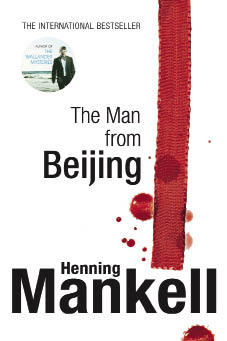In little more than a decade, the cosy world of Anglo-American crime fiction has been transformed by wave after wave of Scandinavian invaders. Some, like Steig Larsson, are suddenly parachuted into the bestseller lists almost before we have had time to become aware of their existence. Others, like Iceland’s Arnaldur Indridason and Norway’s Karin Fossum, advance steadily but less dramatically in terms of sales and critical plaudits. And then there’s Henning Mankell, the Swedish commander-in-chief of the invading forces, who deserves a category to himself.
He is a distinguished playwright, publisher and children’s author, who has a long and honourable record of supporting charitable causes, especially in Africa. But he is best known as the creator of the lugubrious Inspector Kurt Wallender, whose career unfolds over ten novels. Wallender’s popularity is international. An astonishing tribute to his success is the fact that the British dramatisation of Wallender, starring Kenneth Branagh, was shown on BBC1 this winter in tandem with one of Sweden’s Wallender film series on BBC4 (Sweden has two of them).
Wallender, it must be said, is not a barrel of laughs. In fact he’s a barrel of gloom. His father mocks him for becoming a policeman. He narrowly survives a knifing by a drunk. He’s been sued for brutality. His wife leaves him. His daughter tries to commit suicide. He’s haunted by the knowledge that he accidentally killed an innocent man. He’s a diabetic, with an unhappy dependence on alcohol and junk food. And, to cap it all, by the end of his career he’s on the borders of Alzheimer’s disease.
Moreover, his profession plunges him into the murkiest depths of modern Swedish society, from child abuse to technocrime. There’s little glamour or excitement — not for Wallender the high-tech forensics and turbo-charged car chases of so much American crime fiction. For him, work as a detective consists of routine, often fruitless, occasionally enlivened by a spurt of luck or intuition.
Part of the charm of the series is that Wallender is like us — a fallible being in a recognisable and often depressing modern setting. The realistic police-procedural format, too, is comfortably familiar — indeed, Sweden can claim to have invented it more than 40 years ago with Sjöwal and Wahlöö’s Martin Beck series, which was designed from the outset to show the dark and tedious realities of crime, policing and society. (The Martin Beck novels, incidentally, are still fresh and wonderfully readable today.)
So there’s nothing particularly innovatory in the Wallender series, except perhaps their almost unrelieved gloom. Nevertheless, the best of the novels, such as Sidetracked (1999), perhaps, and Firewall (2002), have an impressive moral weight as well as strong storylines. There is also something profoundly and perversely attractive about their combination of stoicism, cynicism, humdrum suffering and obstinate compassion.
After ten Wallender books, it’s understandable that Mankell should want to try something else. His new novel, The Man From Beijing, opens promisingly with a hungry wolf feasting off human remains in the frozen north of Sweden. Soon a photographer discovers an isolated hamlet whose 19 inhabitants have been hacked to death, mostly with a samurai sword. After a quick phone call the photographer expires of a massive heart attack, a gratuitous fatality. The investigating officer, Vivi Sundberg, catalogues the carnage; she’s an obstinate and potentially interesting character, and it’s a shame we don’t see more of her. Birgitta Roslin, district judge, wine buff and retired Maoist activist, reads about the case. She has a remote personal connection with the village because her mother was fostered there before the war, and her foster parents are among the dead. Fortunately Birgitta is able to take time off because of high blood pressure, so she decides, rather implausibly, to mount her own amateur investigation.
This is where things get messy. The narrative rambles over four continents. It dives back to 1863, to the exploitation of Chinese labour imported to help build the US railway system. There’s corruption in Beijing, a glimpse of Mugabe in Zimbabwe, a shooting within earshot of Trafalgar Square, and a villain who could have been designed by Edgar Wallace. This is a revenger’s tragedy and the cast of characters is enormous. Many of them wind up dead.
It has to be said, with regret, that The Man From Beijing is likely to disappoint the legions of Wallender fans around the world. This is only partly because of Wallender’s absence. More to the point, the narrative is, literally and metaphorically, all over the place. It is difficult for the reader to feel much empathy for the characters — there are too many of them, and even their suffering becomes an abstract quality, like a set of statistics. A strong central character might have rescued the novel, but Birgitta, the main viewpoint, is a wet blanket surrounded by a miasma of mild despair. Everything — her marriage, her job, her youthful politics, the Swedish legal system and human nature — has failed to come up to expectations.
Mankell clearly feels passionately about a great evil and wished to write about it. In the event, his polemical purpose overwhelms the fiction. Sometimes this is closer to a lecture than a crime thriller. To sum up, the result is a turkey, albeit a turkey with its heart in the right place. But there is one consolation for Henning Mankell’s many readers: there are reports that a new Wallender novel is on the way.
Andrew Taylor’s latest novel is Bleeding Heart Square (Penguin)






Comments